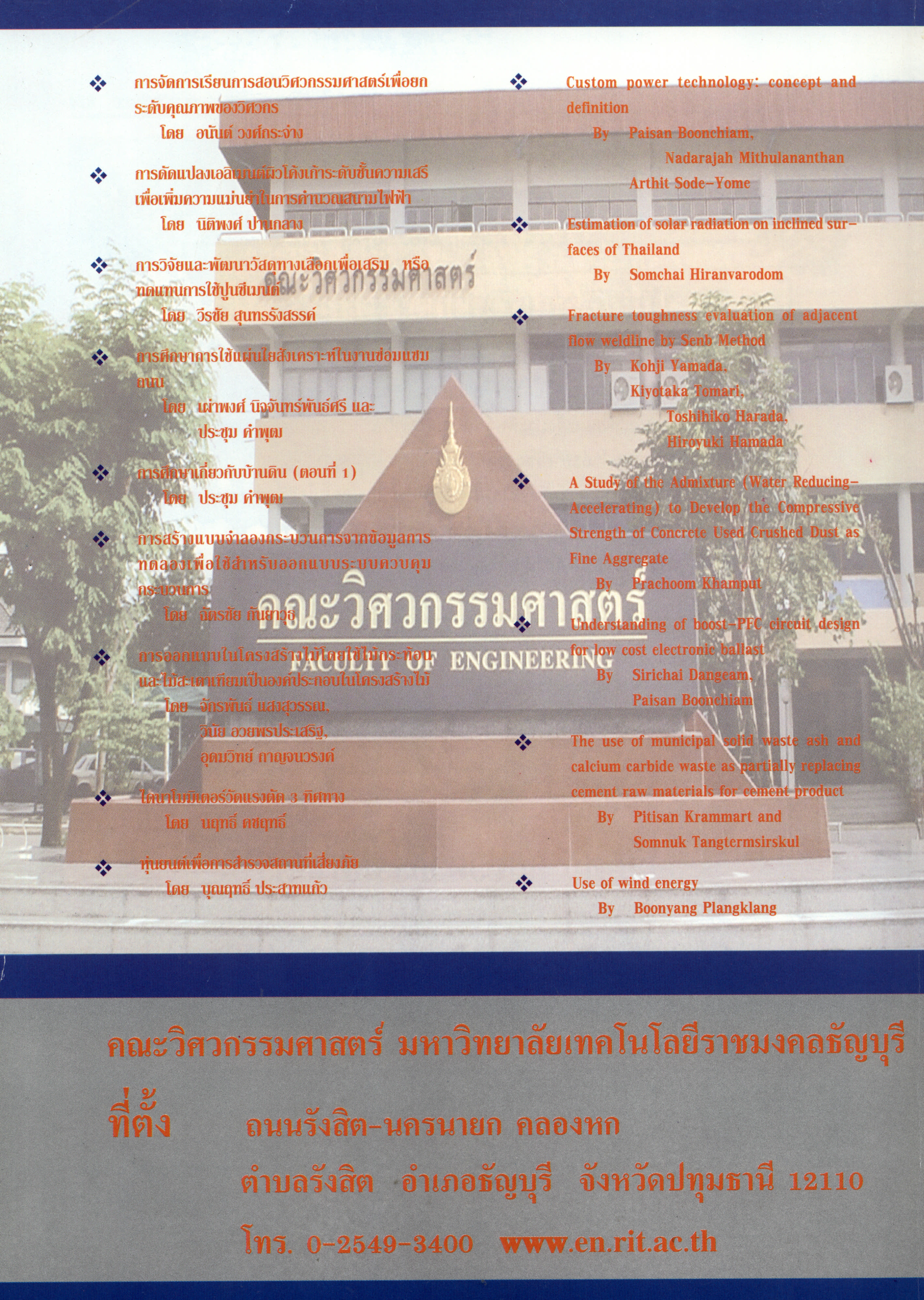Fracturre toughness evaluation of adjacent flow weld line by SENB method
Main Article Content
Abstract
Fracture toughness of adjacent flow weldline occurring around an obstructive pin was evaluated by single edge notched bend (SENB) method. The fracture toughness near the pin was higher than any other part of the weldline. The fracture toughness decreased drastically along the weldline and then increased gradually toward the end on the specimen. These characteristic features could be explained by flow-induced molecular orientation at the weldline interface. The material flow beside the pin stopped in the middle of the filling process. Molecular orientation parallel to the weldline due to the fountain flow relaxed since no shear stress affected the area, resulting in high molecular entanglement across the weldline. On the contrary, at the downstream side the material kept on flowing during the filling process. This indicated that the molecular orientation could not relax due to flow-induced stress during the process. The magnitude of these two areas was dependent on the position of first collision point (FCP) at which two melt fronts collided first behind the pin. The V-notch depth on the surface of the specimens was also dependent on the distance from FCP.
Article Details
The manuscript, information, content, picture and so forth which were published on Frontiers in engineering innovation research has been a copyright of this journal only. There is not allow anyone or any organize to duplicate all content or some document for unethical publication.
References
S. W. Hobbs, Polym. Eng. Sci., 14, 621(1974)
R. M. Criens, Mater. Chem. Phys., 14, 69(1986)
G. Mennig, Angew. Makromol. Chem., 185/186,179 (1991)
R. Malloy, G. Gardner, and E. Grossmann,SPE ANTEC Tech. Papers, 39, 521 (1993)
A. Chrysostomou and S. Hashemi, J. Mater.Sci., 31, 1183 (1996)
R. Selden, Polym. Eng. Sci., 37, 1, 205(1997)
S.-J. Liu, J.-Y. Wu, J.-H. Chang, and S.W. Hung, Polym. Eng. Sci,, 40, 5, 1256(2000)


